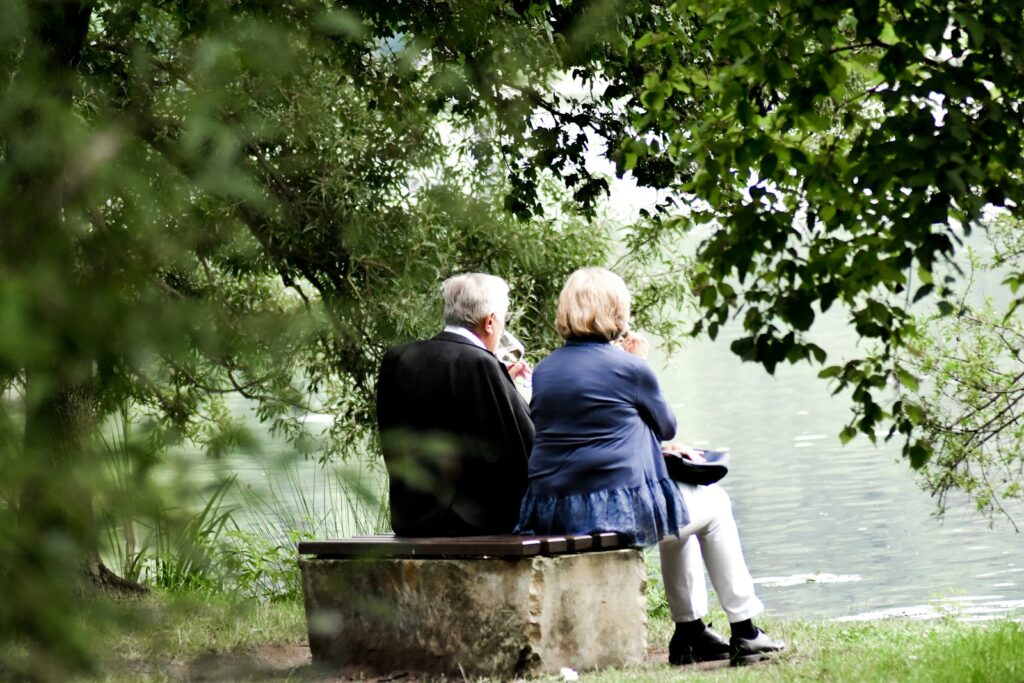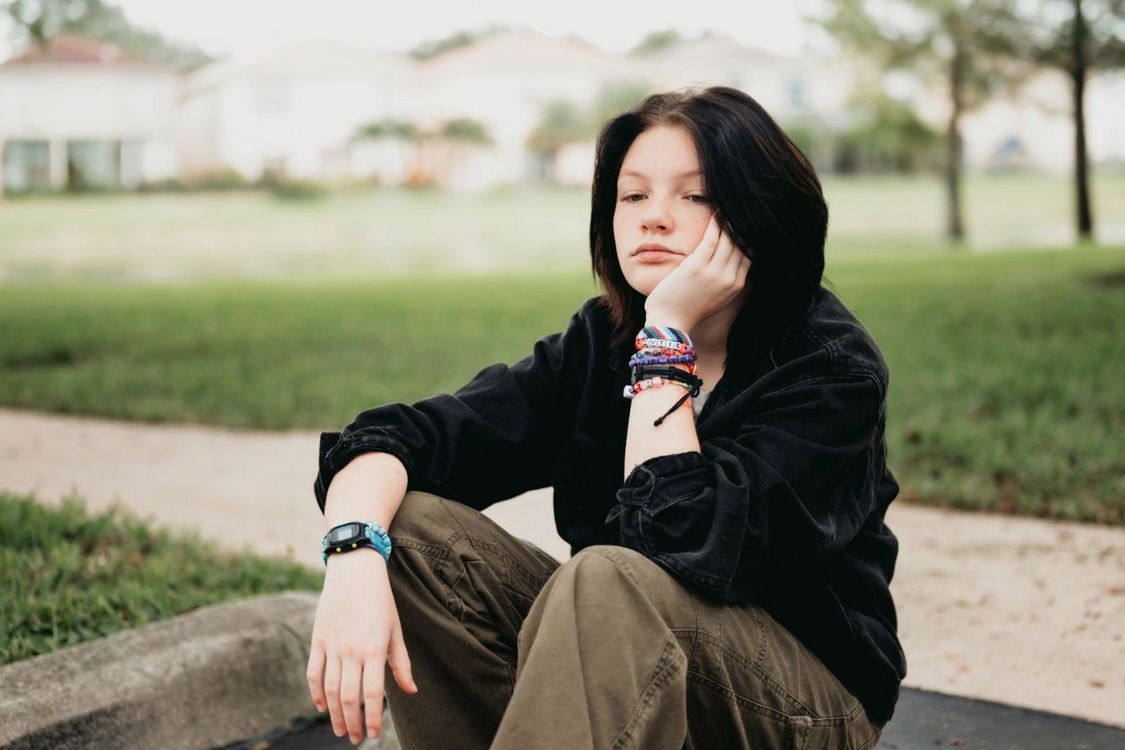
Have you ever experienced the unsettling sensation that time is accelerating beyond control? One moment you are enjoying the calm of the day, and the next it has vanished, leaving only questions in its wake. M. Night Shyamalan’s 2021 film Old transforms this familiar feeling into a psychological and physical nightmare, turning a peaceful beach retreat into a harrowing race against time.
Far more than a conventional thriller, Old functions as a dark allegory about the inevitability of aging, the fragility of family dynamics, and humanity’s struggle to cope with the passage of time. What begins as a serene holiday quickly spirals into chaos when a remote beach inexplicably accelerates the aging process of its visitors, forcing them to live out their entire lifespans in just a single day.
This article explores the first half of the film’s most unforgettable and disturbing moments. From its haunting premise to the grotesque consequences of unnatural aging, Old compels viewers to reconsider their assumptions about time, mortality, and the illusion of control. Prepare for a thought-provoking examination of one of Shyamalan’s most audacious cinematic experiments.

1. The Mind-Bending Premise: Vacationing on Borrowed Time
The Cappa family—Guy, Prisca, and their young children, Maddox and Trent—set out for a secluded tropical beach, hoping for a peaceful retreat. This getaway was intended to be their final family vacation, a quiet effort to reconnect amid the strain of impending separation. However, their destination, though visually idyllic, conceals a horrifying truth.
The beach, while seemingly tranquil, harbors a disturbing secret: it causes the human body to age at an accelerated rate—approximately one year every 30 minutes. What begins as a leisurely escape quickly transforms into a desperate confrontation with time itself. For the visitors, every passing moment equates to a visible, irreversible transformation, as their entire lives unfold in a matter of hours.
This chilling concept forms the foundation of Old, pulling both characters and viewers into a psychological vortex where even the sun and sea become symbols of decay. The intensity of the premise reflects director M. Night Shyamalan’s signature approach, using speculative horror to expose existential fears. The result is a uniquely disturbing narrative that compels its audience to reflect on mortality, aging, and the illusions of permanence.

2. The Diverse Cast Trapped by Time: Strangers in a Strange Land
Upon arrival at the mysterious beach, the Cappa family quickly discovers they are not alone. The resort manager, whose enthusiasm appears unnervingly deliberate, ensures that several other guests are present—unaware that they too have been lured into an irreversible fate.
The ensemble includes Brendan, a rapper who goes by the name “Mid-Sized Sedan,” accompanied by a young woman; the authoritative surgeon Charles, joined by his elderly mother Agnes, his wife Chrystal, and their daughter Kara; as well as Jarin and Patricia Carmichael, a couple with a quiet strength. Each of these characters brings a unique background and personal tension into the unfolding chaos.
Beneath the surface of polite introductions, distrust and anxiety begin to mount. Charles grows increasingly wary of Brendan, particularly after noticing the latter’s unexplained nosebleeds, which are linked to his hemophilia. This early suspicion introduces interpersonal conflict that deepens the overall sense of unease and fragmentation among the group.
What intensifies the horror is the way these unrelated individuals are confined in a setting that strips away time and privacy. Forced into close proximity, their psychological unraveling becomes inevitable. As panic gives way to paranoia, their isolation grows ever more suffocating. The narrative thrives on these frictions, using the group’s deteriorating dynamics to mirror the relentless passage of time itself.

3. Medical Conditions on Fast-Forward: When Illness Becomes Instant Death
One of the most unsettling dimensions of the beach’s temporal distortion lies in its impact on pre-existing medical conditions, which are transformed into swift and deadly crises. What would typically unfold over months or years is compressed into mere hours, stripping characters of the time usually afforded for diagnosis or intervention.
Prisca Cappa, for instance, suffers from a benign ovarian tumor, normally considered manageable due to its slow growth. On this beach, however, the tumor expands at a catastrophic rate, prompting Charles, the group’s surgeon, to perform an impromptu operation directly on the sand. The sequence captures the unbearable urgency imposed by the beach’s warped timeline.
Brendan’s hemophilia, typically resulting in minor bleeding such as nosebleeds, becomes another source of tension. After suffering a small cut, his wound heals almost immediately—evidence of the beach’s peculiar influence on cellular processes. This accelerated healing, while seemingly beneficial, further underscores the unnatural and destabilizing nature of the environment.
The most disturbing medical progression occurs in Chrystal, who suffers from hypocalcemia, a condition that weakens the bones. Her body undergoes rapid and grotesque deterioration, with fractures occurring repeatedly and healing improperly, leading to severe contortions and eventual death. The visual horror of this sequence emphasizes how even latent conditions become fatal in this accelerated setting, revealing the body’s fragility when deprived of temporal equilibrium.

4. The Frightening Attempts to Escape: Trapped by an Invisible Wall
Upon discovering the horrific truth about the beach’s time-distorting effects, the characters immediately seek a way out. Yet every attempt to leave is met with a devastating reality: the beach is not merely remote, but sealed by an invisible force. Any attempt to cross its unseen boundary results in sudden unconsciousness, followed by inexplicable reawakening in the exact same spot. The effect is disorienting and deeply unsettling, as if time itself enforces their entrapment.
Multiple efforts are made to escape this temporal enclosure. Jarin, a nurse and Patricia’s husband, bravely ventures into the ocean in search of help, only to succumb to the unseen dangers of the water. Kara, now a teenager due to the beach’s aging effect, attempts to climb the surrounding cliffs, believing elevation might provide a way out. Her fall and subsequent death are both tragic and symbolic, emphasizing the futility of hope in a world governed by unnatural rules.
This section of the narrative powerfully enhances the film’s atmosphere of claustrophobia. Though the setting appears vast and inviting, it operates as an invisible prison, governed by altered physical laws. The characters retain full physical autonomy, yet their world has shifted into a distorted realm where effort, logic, and determination are rendered meaningless. Each failed escape underscores the film’s central terror: that the passage of time, once accelerated and confined, becomes a psychological weapon.

5. Rapid Life Cycles & Tragic Ends: A Horrifying Biology Lesson
As time continues to accelerate, its most devastating effects are revealed through the rapid physical transformations of the characters, particularly the children. Trent and Kara, who arrive as young children, quickly develop into adolescents and then young adults. During this unnatural progression, they engage in a sexual encounter, resulting in Kara’s abrupt and shocking pregnancy. Her body undergoes the full gestational cycle within minutes, culminating in childbirth—a deeply unsettling illustration of life condensed into an unthinkably brief period.
The newborn’s existence is tragically short-lived. With time moving uncontrollably forward, the infant is deprived of the care and nourishment necessary for survival and dies within moments of birth. This harrowing sequence underscores the indiscriminate cruelty of the beach’s temporal distortion, transforming the natural cycle of life into a brief, tragic interruption.
The effects of accelerated time are not limited to the living. Earlier in the film, the group discovers the corpse of Brendan’s companion. Over a few hours, her body undergoes complete decomposition, a process that would ordinarily require months or years. The visual impact of this transformation reinforces the film’s central theme: that every biological process—growth, birth, decay, and death—is subject to the same relentless compression under the influence of time.

6. Descent into Madness: Charles’s Unraveling Mind
While the physical effects of accelerated aging are deeply unsettling, the psychological deterioration experienced by the characters proves equally disturbing. Charles, a surgeon already diagnosed with schizophrenia, suffers a rapid and dangerous decline under the stress of the beach’s unnatural environment. The combination of escalating paranoia and cognitive decline soon manifests in violent behavior. In one alarming moment, he lashes out and cuts Brendan with a pocketknife during an episode of uncontrolled rage.
As the hours progress and his mental state deteriorates further, Charles becomes a significant threat to the safety of the group. He attacks both Guy and Prisca, transforming from a troubled individual into a source of active danger. His unraveling mental condition, compounded by the relentless external pressures, adds psychological complexity to the film’s broader themes of loss and disintegration. He is not only suffering from the beach’s physical consequences but is also consumed from within by an accelerating mental collapse.
His descent ends in a particularly grim manner. After assaulting Guy and Prisca, Charles is injured by Prisca with a rusted knife. Under normal conditions, such a wound might be minor. However, in this accelerated environment, the injury rapidly develops into a severe blood infection, leading to his agonizing death. The sequence illustrates the beach’s pervasive and indiscriminate effect on every dimension of human life, rendering both body and mind vulnerable to irreversible decay.

7. The Silent Suffering and Poignant Farewells
As time relentlessly advances on the beach, the physical deterioration of the characters grows increasingly poignant and specific. Beyond accelerated aging, the characters endure more subtle but equally harrowing sensory declines. Guy experiences progressive vision loss, his once sharp sight fading into a blurry haze. Prisca, his wife, suffers from hearing impairment, which further isolates her within the already terrifying environment. These sensory degradations serve as a stark reminder that time is not merely altering their appearance but systematically eroding their capacity to perceive and engage with their surroundings.
The beach’s unforgiving acceleration also claims Patricia, the epileptic psychologist, who succumbs to a fatal seizure. Under normal circumstances, her condition might be manageable, but within the beach’s compressed timeframe, her body is unable to cope, resulting in a tragic and swift death. This highlights how the environment mercilessly exploits every pre-existing vulnerability, transforming controlled medical conditions into immediate threats to survival.
Arguably the film’s most profound emotional moment occurs near the end when an elderly Guy and Prisca reconcile after enduring immense hardship. They pass away peacefully from natural causes within moments of each other. This quietly beautiful yet heartrending conclusion to their tumultuous journey embodies the film’s allegorical exploration of aging, marriage, and the search for tranquility amid the inexorable passage of time.

8. The Children’s Ingenuity and the Path to Freedom
When all hope appears lost, a spark of resourcefulness emerges through the despair, notably from the now middle-aged siblings, Trent and Maddox. While exploring the beach, they discover a vital clue: a notebook belonging to a previous visitor. This is not an ordinary journal; it contains the names of many who perished on the beach, alongside unsettling evidence suggesting they were being observed. This revelation intensifies the group’s paranoia, indicating their situation is not a mere natural phenomenon but something far more sinister.
Trent recalls a covert message given earlier by Idlib, the resort manager’s nephew. He connects this message to an underwater coral passage, presenting a potential escape route. This discovery marks a pivotal turning point. Convinced that the coral passage may offer a way to leave the beach without being forcibly returned, Trent and Maddox decide to take the ultimate risk.
Armed with this faint hope, the siblings dive into the water and navigate through the coral reef. The sequence is fraught with tension, especially when Maddox’s swimsuit becomes entangled in the coral, threatening their escape. However, against overwhelming odds, they successfully emerge on the other side, shaken but alive, proving that escape from this temporal prison is not impossible.

9. The Shocking Truth Revealed: A Devious Grand Scheme
Following Trent and Maddox’s extraordinary escape, Old reveals the chilling truth behind the accelerated aging phenomenon on the beach. Contrary to being a natural anomaly or supernatural curse, the resort is a facade for a pharmaceutical company named Warren & Warren. The visitors, particularly those with pre-existing medical conditions, have unknowingly become test subjects in clandestine clinical trials.
The researchers administer experimental drugs by secretly contaminating the guests’ complimentary beverages upon arrival. The beach’s inherent, albeit unexplained, ability to accelerate human aging provides a disturbingly efficient environment for these trials. This natural time distortion allows the researchers to condense what would normally require years of testing into a single day.
Trent and Maddox, having escaped the beach’s influence, present the previous visitor’s notebook as compelling evidence to Greg Mitchel, a police officer on vacation. He confirms that all individuals listed are registered missing persons. This leads to the swift arrest of the researchers and the issuance of subpoenas to Warren & Warren, ensuring accountability and halting this malevolent operation.

10. Behind the Camera: A Pandemic Production with a Personal Touch
Bringing a concept as extraordinary as Old to the big screen presented significant challenges, and M. Night Shyamalan’s production process was as distinctive as the film itself. The inspiration emerged from a personal gesture: Shyamalan chose to adapt the French graphic novel Sandcastle after receiving it as a Father’s Day gift from his three daughters in 2017, highlighting the film’s deeply familial roots.
Filming occurred over three months in the Dominican Republic amid the COVID-19 pandemic, a daunting undertaking. Demonstrating exceptional commitment to health and safety, Shyamalan funded a ten-week hotel quarantine for his entire production crew. This strict measure ensured that no crew member tested positive for the virus throughout filming. The decision to shoot primarily on 35mm film at a single location—the stunning yet perilous Playa El Valle beach—contributed to a claustrophobic and immersive atmosphere essential to the narrative.
The family collaboration extended beyond inspiration. Shyamalan’s daughter Ishana served as second unit director, capturing captivating footage of the natural surroundings. His other daughter, Saleka, composed an original song titled “Remain,” inspired by marriage vows and U2’s “With or Without You,” underscoring the relationship between Guy and Prisca. This collaboration infused the project with a personal and heartfelt dimension despite its horrific themes.
Shyamalan also drew from a diverse cinematic heritage to shape Old. Influences ranged from Australian New Wave films such as Walkabout and Picnic at Hanging Rock to classic works by Akira Kurosawa, including Rashomon and Ran. Other inspirations included The Exterminating Angel, Kuroneko, Jaws, and the iconic television series The Twilight Zone. This eclectic mix crafted a distinctive and richly layered horror experience.

11. A Divisive Dialogue: Critical Reception and Audience Reactions
Upon its release in theaters, Old sparked considerable discussion, though opinions were divided. Critics delivered mixed reviews, with the film earning a 50% positive rating on Rotten Tomatoes and a score of 55 out of 100 on Metacritic. Audience feedback, measured by CinemaScore, reflected a lukewarm response, resulting in an average grade of “C+.” Clearly, the film did not achieve universal acclaim, a common outcome for many of Shyamalan’s works.
Criticism primarily targeted the screenplay and dialogue. Reviewers described the exposition as heavy-handed and mannered, labeling the plot as confusing and suggesting the story might have been better suited for a television series format. Comments such as “stilted dialogue that runs in circles” and “an odd insistence on unnatural performances” appeared frequently. Alissa Wilkinson, one critic, remarked that Shyamalan “has not improved his skill in writing dialogue over the years.”
Nevertheless, the film also received notable praise. Critics lauded its original concept and striking cinematography, highlighting the breathtaking main location. Some appreciated the film’s dark humor, describing it as crafted with a “sadistic delight” and categorizing it as a “pitch-black comedy” or “a relentless and unforgiving thriller.” The fluid directing style and the seamless transition of actors as characters aged garnered further commendation. However, the film’s themes and especially its twist ending polarized opinions. Some reviewers favored the graphic novel’s more ambiguous conclusion, finding it more satisfying, while others felt the film’s resolution was less effective.

Despite receiving mixed critical reviews, Old achieved notable success at the box office, demonstrating M. Night Shyamalan’s enduring ability to captivate audiences with his distinctive narratives. The film grossed a substantial $90.2 million worldwide against a modest production budget of $18 million, generating a healthy profit for Universal Pictures. Its opening weekend yielded $16.85 million, marking Shyamalan’s sixth film to top the box office, although it was the lowest opening weekend of his career. Nevertheless, securing the top spot remains a significant achievement.
The film’s release coincided with other summer premieres, prompting some analysts to suggest a growing cultural phenomenon labeled “screen fatigue,” where audiences appeared weary of screen-based entertainment following the pandemic. Despite this, Old succeeded in generating significant public interest. Its marketing efforts included a memorable 30-second commercial aired during Super Bowl LV and an innovative Snapchat aging filter, which garnered an impressive 23 million views worldwide on its debut day, with celebrities such as Shaquille O’Neal participating.
Comparisons to popular thrillers like A Quiet Place Part II and The Conjuring 3, as well as classic television series such as Lost, further fueled discussions around the film. This ongoing discourse, coupled with the film’s original premise, solidified Old as a polarizing yet prominent cultural phenomenon in 2021. Recognition through nominations for awards including “Campiest Flick” and “Best Thriller Film” underscore its memorable, if sometimes unsettling, presence in contemporary cinema.
Old offers a compelling journey through themes of accelerated aging, medical crises, corporate conspiracy, and the relentless passage of time. The film exemplifies M. Night Shyamalan’s unique creative vision and his talent for provoking thought and discomfort in equal measure. Whether embraced or criticized, Old undeniably provided an unforgettable and thought-provoking cinematic experience. With that, we conclude our exploration of this intriguing film and look forward to the next challenge: finding a beach where time truly slows.



